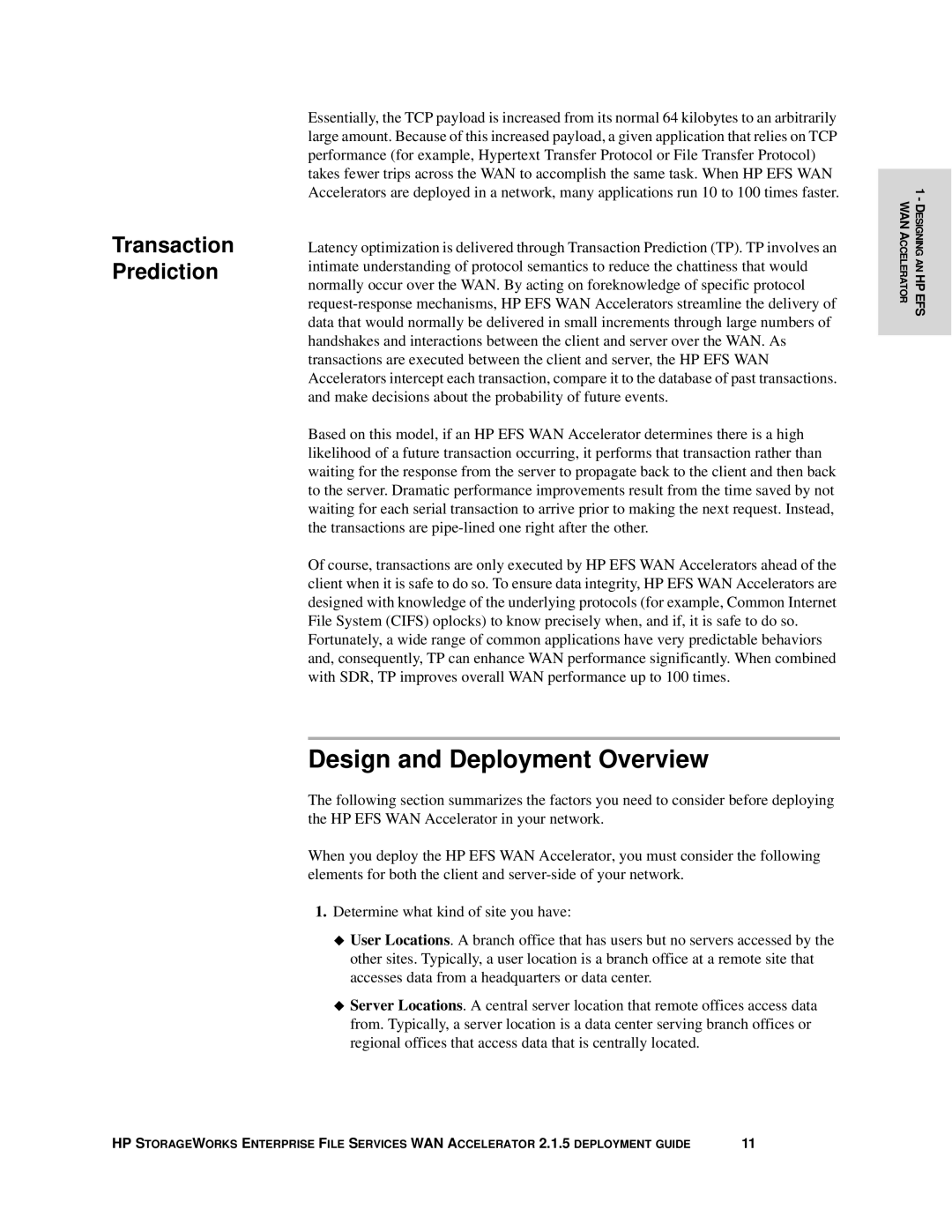
Transaction Prediction
Essentially, the TCP payload is increased from its normal 64 kilobytes to an arbitrarily large amount. Because of this increased payload, a given application that relies on TCP performance (for example, Hypertext Transfer Protocol or File Transfer Protocol) takes fewer trips across the WAN to accomplish the same task. When HP EFS WAN Accelerators are deployed in a network, many applications run 10 to 100 times faster.
Latency optimization is delivered through Transaction Prediction (TP). TP involves an intimate understanding of protocol semantics to reduce the chattiness that would normally occur over the WAN. By acting on foreknowledge of specific protocol
Based on this model, if an HP EFS WAN Accelerator determines there is a high likelihood of a future transaction occurring, it performs that transaction rather than waiting for the response from the server to propagate back to the client and then back to the server. Dramatic performance improvements result from the time saved by not waiting for each serial transaction to arrive prior to making the next request. Instead, the transactions are
Of course, transactions are only executed by HP EFS WAN Accelerators ahead of the client when it is safe to do so. To ensure data integrity, HP EFS WAN Accelerators are designed with knowledge of the underlying protocols (for example, Common Internet File System (CIFS) oplocks) to know precisely when, and if, it is safe to do so.
Fortunately, a wide range of common applications have very predictable behaviors and, consequently, TP can enhance WAN performance significantly. When combined with SDR, TP improves overall WAN performance up to 100 times.
Design and Deployment Overview
The following section summarizes the factors you need to consider before deploying the HP EFS WAN Accelerator in your network.
When you deploy the HP EFS WAN Accelerator, you must consider the following elements for both the client and
1.Determine what kind of site you have:
User Locations. A branch office that has users but no servers accessed by the other sites. Typically, a user location is a branch office at a remote site that accesses data from a headquarters or data center.
Server Locations. A central server location that remote offices access data from. Typically, a server location is a data center serving branch offices or regional offices that access data that is centrally located.
1 - DESIGNING AN HP EFS WAN ACCELERATOR
HP STORAGEWORKS ENTERPRISE FILE SERVICES WAN ACCELERATOR 2.1.5 DEPLOYMENT GUIDE | 11 |
